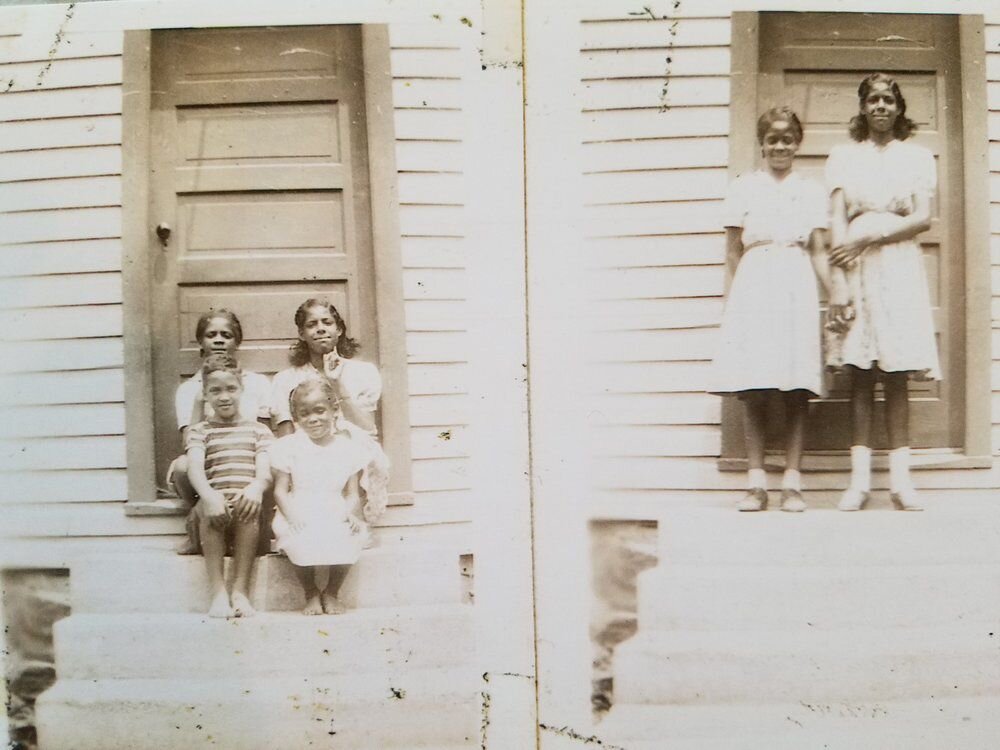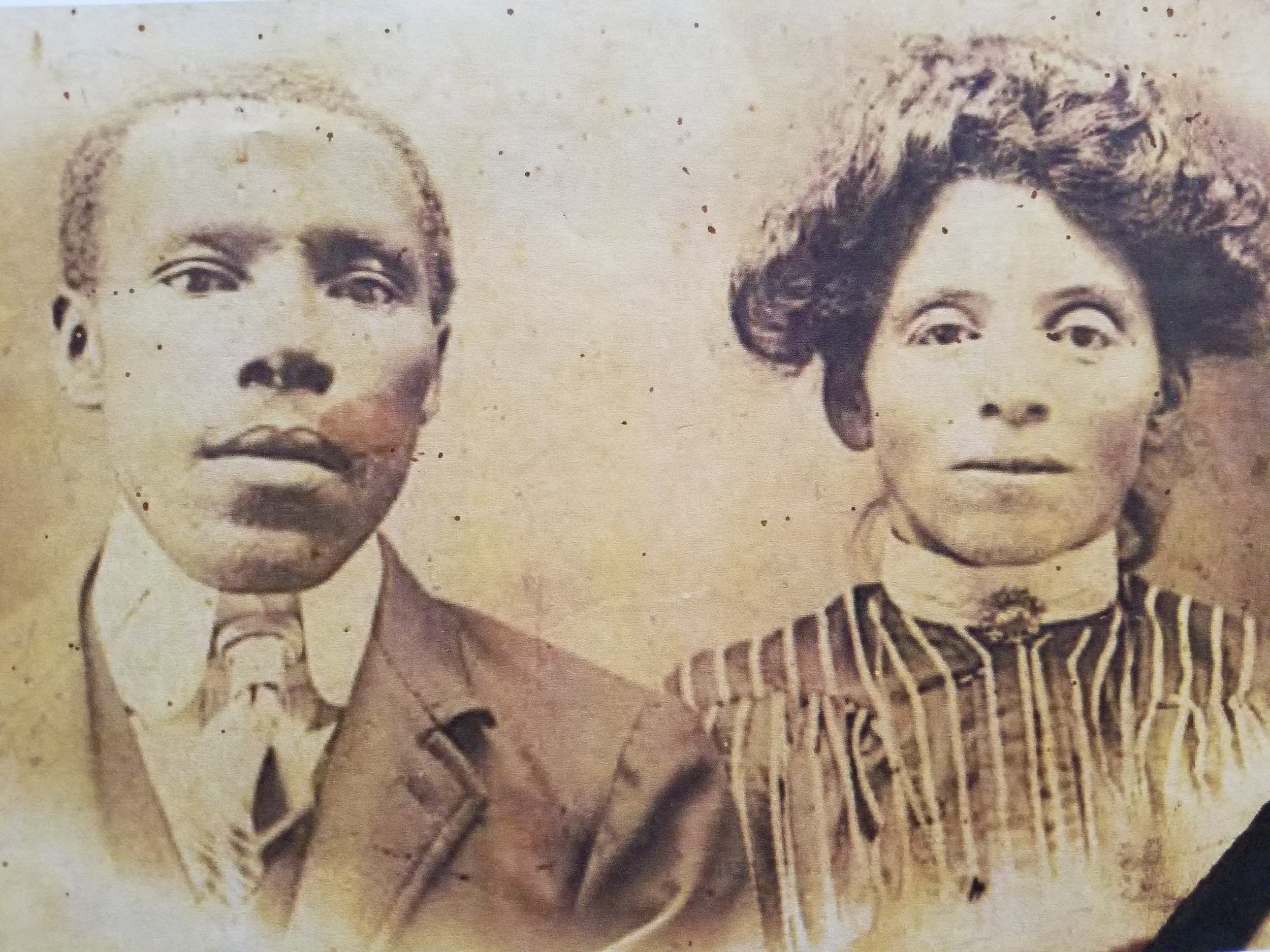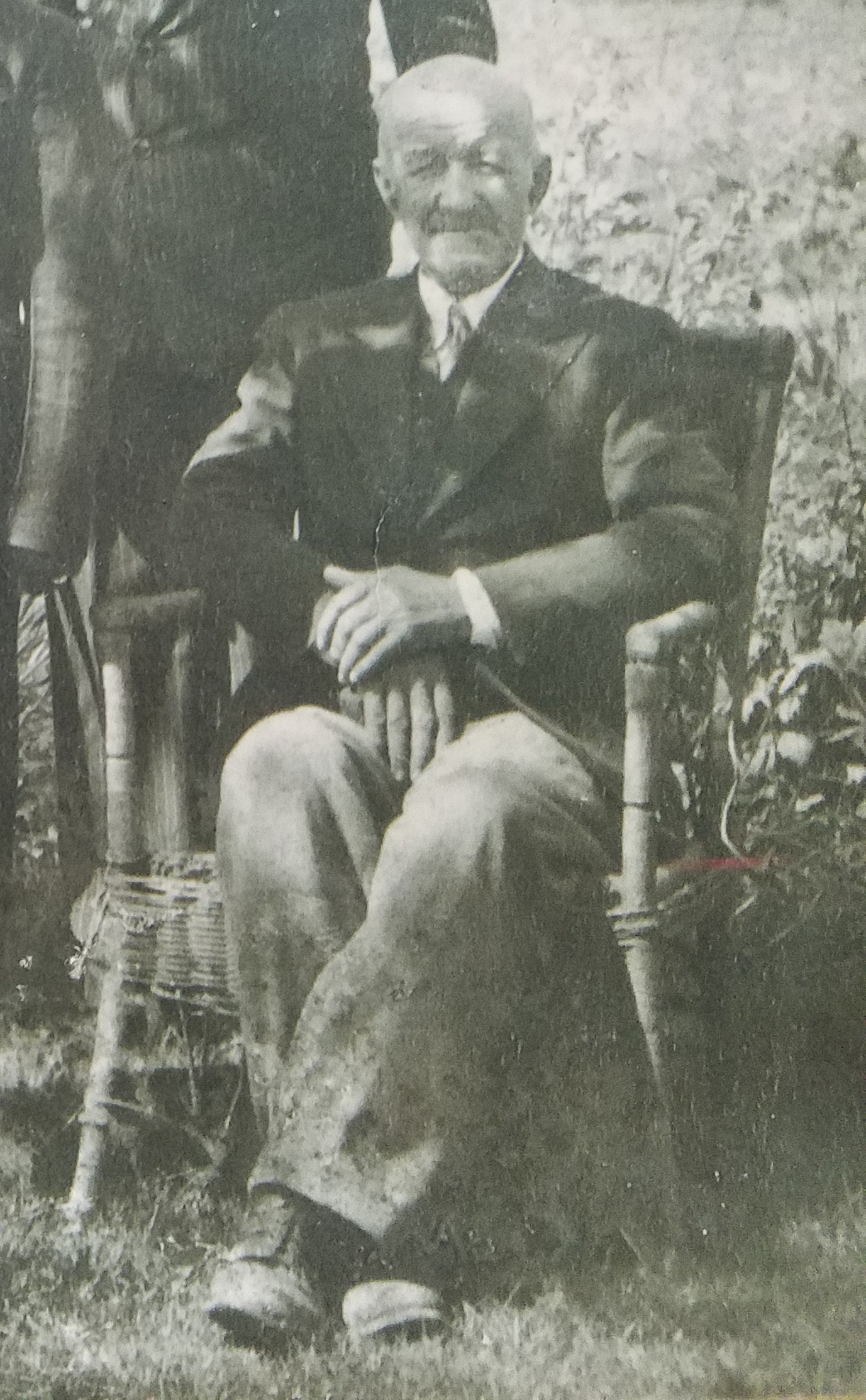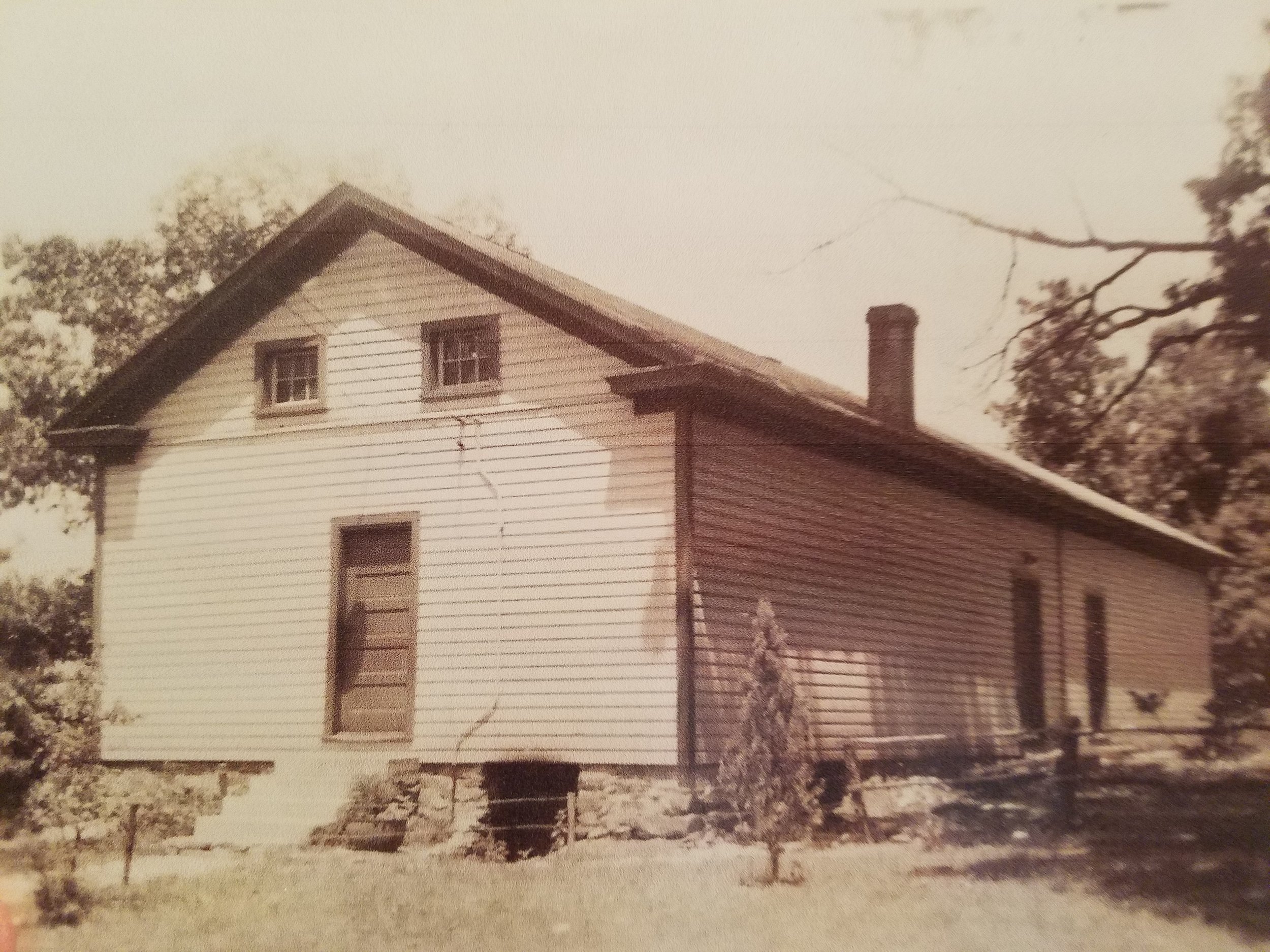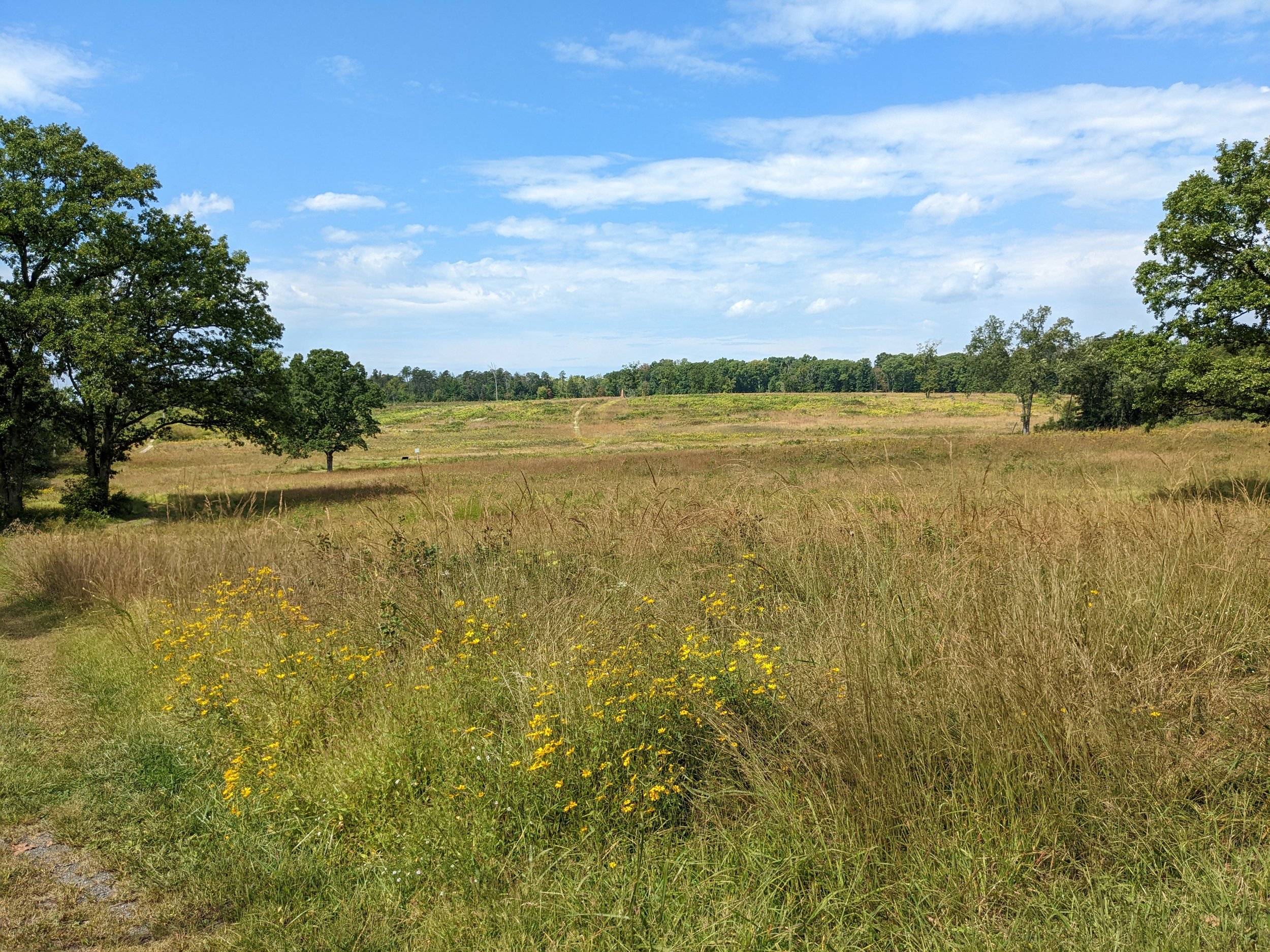
NEWS
Virginia Piedmont Heritage Area Association Welcomes New Public Programs Coordinator, Hannah Schetselaar
The Virginia Piedmont Heritage Area Association (VPHA) is pleased to announce Hannah Schetselaar as its new Public Programs Coordinator.
Schetselaar joined VPHA in December 2025, bringing with her a strong background in historic house museums, research, event planning, and public education. Her work has included contributions to the Genealogy of Slavery Project, Dangerous Harbor, and several oral history initiatives dedicated to documenting underrepresented voices across the region. She has also collaborated with numerous museums and cultural institutions, including the Christiansburg Institute, Historic Smithfield, and most recently served as Education Assistant at Oatlands for the National Trust for Historic Preservation.
A graduate of Roanoke College, Schetselaar earned her B.S. in Psychology in 2022 before completing her M.A. in History and Public History Certificate at Virginia Tech in 2025. Raised in Prince William County, she developed an early appreciation for the landscape and historic sites of the Heritage Area, and that passion guided her commitment to preservation and interpretation. Though a colonial historian at heart, she enjoys exploring all eras of history. Her first academic publication will appear in the December 2025 issue of the Journal of Slavery and Data Preservation.
In her new role at VPHA, Schetselaar will plan, research, and execute a wide range of public programs for adult audiences. These include the organization’s annual Civil War Conference, author book talks, historic tours, and VPHA’s upcoming 250th commemoration programming. In addition to this wide range of programs throughout the year, Hannah will also assist VPHA Director of Education Travis Shaw in the research and publication of the organization’s many guides, driving tours, and educational content.
“We are delighted to welcome Hannah to the team,” said VPHA Executive Director Ian MacDougall. “Her experience, energy, and commitment to inclusive historic interpretation will be invaluable as we expand our public programming and deepen our community engagement.”
Virginia Piedmont Heritage Area Association Announces New Executive Director, Ian MacDougall
Photo Courtesy of Middleburg Photo
Middleburg, Virginia, August 13, 2025 - The Virginia Piedmont Heritage Area Association (VPHA) is pleased to announce the promotion of its Public Programs Coordinator, Ian MacDougall, to Executive Director. Ian is in his fourth year with the Heritage Area, having managed VPHA’s Public Programs since joining the organization in 2021. In his previous role, Mr. MacDougall oversaw VPHA’s many public programs put on throughout the year, including the popular Annual Conference on the Art of Command in the Civil War. He also served on the LoudounVA250 Committee in the role of Programs Chair from 2022-2025, having recently overseen the committee’s bicentennial commemorations of the Marquis de Lafayette’s visit in 1825. Ian has worked in historic education for most of his career, working for the Colonial Williamsburg Foundation’s Department of Military Programs before joining the Heritage Area. Ian and his wife Christine live in Taylorstown in Loudoun County.
As VPHA’s Executive Director, Mr. MacDougall will be the chief operating officer of the organization and responsible for the active management of the Association’s daily business, development, fundraising, membership, and preserving the integrity of the historic landscape of the Virginia Piedmont Heritage Area. Mr. MacDougall noted, “It’s an honor and a privilege to step into a position that has been steadfastly helmed by Alexander Nance over the last three years, with an ever-growing, diverse range of educational programs provided by our Director of Education, Travis Shaw.”
VPHA’s Chair, Jim Little, stated “We needed look no further for our new Executive Director than within our own organization for the knowledge and skills necessary to continue our mission of preservation through education. Ian has demonstrated his ability to further the mission to higher levels.”
VPHA Honors 2023 Heritage Hero and Public Educators of the Year
On January 8th, the Virginia Piedmont Heritage Area was thrilled to host our annual Heritage Hero awards ceremony at Buchanan Hall in Upperville, VA. Since 2007, we have awarded the distinction of “Heritage Hero” to local citizens and organizations who have made an important contribution or lifetime of contributions to the Virginia Piedmont Heritage Area. These citizens exemplify a true understanding of the historic resources of the region and show a deep commitment to preserving them. Their selfless efforts as stewards make them Heritage Heroes. In addition to our Heritage Hero award, we were proud to give our Public Educator of the Year award on the same evening.
The 2023 honoree was Betsee Parker. Dr. Betsee Parker has a long and distinguished career as an avid preservationist and philanthropist spanning many years. She is an honors graduate of Wellesley College and Harvard University and is an ordained Episcopal minster. She is also the 17th Baroness of Lochiel, Scotland. In addition to her philanthropy in Virginia Piedmont, she has been an active philanthropist worldwide. Her work has supported numerous charities in the United Kingdom, and she has played key roles in projects throughout Africa working on several development and humanitarian initiatives. She has also given major support to charities in Haiti, among several other countries.
Locally, Dr. Betsee Parker has been an outstanding preservation leader as part of her efforts to protect and steward numerous historic properties in the Virginia Piedmont. Dr. Parker’s efforts include the restoration of the historic Huntland Estate, on Pot House Road, which encompasses the main house, gardens, stables, kennels, and original quarters of enslaved people. The estate includes 150 acres. When land surrounding the Huntland Estate came on the market, Dr. Parker acted swiftly to purchase the acreage to block the possibility of any housing development plans. She also made the conservation purchase of the nearby Farmer’s Delight estate. Farmer’s Delight, located on Mountville Road, is the older of the two houses, dating back to pre-Revolutionary America. The house itself was built in the 1790s by Colonel Joseph Flavius Lane. Dr. Parker kept the home’s historical nature intact and preserved acres of priceless ecological habitat on the grounds as well. Dr. Parker was also a leader in multiple other crucial preservation efforts in our area. To name a few, she was instrumental in developing and funding the National Register of Historic Places nomination for the Upperville Colt & Horse Show Grounds, she ensured the preservation of the historic General Store in the village of Unison by donating the building to the Unison Preservation Society, and she facilitated the donation of the historic Allen House on the east end of Middleburg to the Middleburg Museum Foundation.
The Public Educator of the Year award is given each year in recognition of a person or group for their commitment to sharing the history of the Heritage Area with a wider audience. The award was given to two honorees for their work in 2023. The first honoree is Danyael Graham, a long-time educator and the current Social Science Supervisor for Loudoun County Public Schools. Since taking on the role as Supervisor Danyael has worked closely with community organizations, including VPHA, to bring local history to students throughout the county. She has been instrumental in connecting teachers to VPHA staff and making schools aware of the historic resources available in the Heritage Area. The second 2023 award recognized the Waterford Foundation. Since 1943 the Waterford Foundation has worked to protect and preserve the village of Waterford and the surrounding landscape. The village has become an important educational resource, providing countless students with the opportunity to explore an intact 19th century village. In 2023, the Foundation worked to create an extensive new field trip program during which hundreds of middle school students learned about the complex history of the Reconstruction era through the experiences of Waterford’s citizens.
VPHA Chair Steven Price and 2023 Heritage Hero Dr. Betsee Parker
VPHA Director of Education Travis Shaw and 2023 Public Educator of the Year, Danyael Graham
VPHA Director of Education Travis Shaw and 2023 Public Educator of the Year, the Waterford Foundation
Balancing Preservation and Practicality: Maintaining Our Historic Rural Roads in the 21st Century By Jane Covington
Balancing Preservation and Practicality: Maintaining Our Historic Rural Roads in the 21st Century By Jane Covington
Although the decision to pave a road is presented as a simple yes or no answer, it’s a decision that comes with a host of complex issues, making the right solution difficult to uncover.
There are well-reasoned arguments on both sides for pave / don’t pave. It’s also an active topic for this community with an impending Board vote on September 13th. As such, it is important that all Loudoun County citizens have the information to make the right decision and the tools to keep our rural roads functioning in a condition that our citizens deserve.
Balancing preservation and practicality has a number of important aspects to consider:
1. Practicality: Of utmost importance, all of us are deeply committed to ensuring the gravel roads are safe and efficient. This in itself is a challenge – performance in the 21st century for a 200-year-old landmark is a big ask. This means accommodating commuters, soccer moms, school buses, emergency vehicles, and the ever-present Amazon delivery truck.
2. Preservation: Preservation means not only preserving two centuries of Loudoun’s history, but also involves protecting the intangible aspects of the gravel roads, such as the recreational and agricultural activities that happen along a gravel road and the intrinsic role the roads play in making western Loudoun unique. In losing the gravel roads, we lose one more part of our rural landscape.
Typically in Loudoun, improving a gravel road means paving. However, with paving comes a host of associated issues that should also be brought forward into the public discussion. Paving increases speed and traffic volumes, increases crash hazards, and reduces the chances of other rural actives taking place along the road – such as fat tire bike rides, long hikes, agricultural pursuits, equestrian activities, chances of neighbor meeting neighbor – or any other rural activity that spontaneously happens along a gravel road.
In order to come to a reasonable solution, it’s important that we broaden the decision-making context for our elected leaders. And citizens need a wider array of options for ‘improvement.’ VDOT needs the proper methods, correctly specified materials, and funding in the right places to produce a better driving surface. The right solution takes input from all of us.
Through our work, we have identified six priority areas, which can happen now, that are needed to balance preservation and practicality:
1. There is the need for a more transparent and technical approach for when a road is to be paved.
Often the process of allocating public funding to paving is a response to a particularly well-motivated group or an influential individual. Or, the process is brought about by polling the residents of a particular road. And sometimes the process happens without broad citizen awareness. In the case of Old Wheatland Road, for example, the process was brought about by a combination of all of these factors.
An improved technical and transparent approach is warranted. Such an approach might involve a set of objective criteria such as the physical condition of the road, current and future traffic volumes, safety concerns and crash data, historic significance, recreational uses, evaluation of political influence, cost to maintain vs. cost to pave, and so on.
At the local level, Loudoun’s Supervisors have approved the development of criteria for prioritization of gravel roads – in other words, a scoring system. This effort was initiated by staff but never completed, and we hope this sound vision is one day actualized.
At the state level, we understand that VDOT’s Research Council is now beginning to consider how to develop a true gravel roads management system, which can be used to determine which roads might be paved or what else might be appropriate, such as improving drainage, rebuilding the driving surface, and other alternatives to paving. VDOT’s innovation is critical to improving the performance of our gravel roads and we are grateful for their work.
2. Need for more nuanced solutions other than pave / don’t pave.
Currently, the question of gravel road improvement is presented as a binary solution: pave / don’t pave. However, VDOT’s recent work along Old Waterford Road demonstrates that there is a broad array of solutions to allow an old gravel road to perform to 21st century standards.
VDOT’s work along Old Waterford was masterful and used existing specified materials and methods. There, VDOT demonstrated improvements in drainage; road contouring; creative design; repair of roadside ditches; managing roadside vegetation, improving crowning and sloping of road surfaces; using higher quality surface materials; and rolling gravel surfaces. All of this thoughtful work made a huge difference. There is the argument that the project was too expensive; however, much of the cost of road improvement was allocated to deferred road maintenance, which was needed, whether the road remained gravel or was paved.
Based on the work at Old Waterford, we know the solution is broader than pave / don’t pave – there is an array of options of how to improve a gravel road. These solutions should be presented for public discussion before arriving at a pave / don’t pave decision. For example, the work at Old Waterford proves there is a third option.
3. There is a need for more informed citizen engagement and a broader audience than just those who live along the portion of gravel road to be paved.
Paving has implications beyond the immediate road to be paved and therefore the impact on the surrounding landscape and residents needs to be considered.
In the past, outreach to citizens before a paving project starts has been limited. Recently, the County initiated a ballot voting program, which we very much appreciate. However, there can be improvements. We suggest sending the ballot to all neighbors who will be affected by paving– not just those living along the area to be paved. When a gravel road is paved, the impacted area is wide – affecting not just those along the stretch of new pavement – but also those nearby who will feel the effects of increased speed and traffic volume, just as the village of Waterford experienced when Milltown Road was paved.
Citizen outreach should be broad and inclusive.
In addition, when the pave/ don’t pave ballot is sent, there could be the inclusion of broader considerations beyond the two options. For one, we just identified the third choice of ‘please improve my gravel road.’ There could also be the broader discussion of the historic significance of the road, discussion of the nuances of what will be lost if the road is paved, discussion of the impact of increased cut-through and commuter traffic, and discussion of how to manage increased speeds along the road.
All impacts of paving should be considered before making decisions.
4. There is a need for better gravel road maintenance including the need for appropriately specified materials and proper methods.
VDOT is doing a great job with what they have, but their work can be made easier and more efficient with appropriately specified gravel road materials and best practice methods.
For materials: Currently VDOT uses a gravel called 21A, a typical construction gravel. 21A gravel is a soft stone, which under pressure from tires, turns to dust. In addition, lack of sufficient standards leads to improper balance of stones and fines, which means the gravel doesn’t compact enough to produce a durable surface. When applied properly and rolled, 21A will do very well. VDOT could incorporate rolling as a specified method for maintaining a gravel road or could find a substitute for 21A. VDOT has tested superior aggregates in Loudoun, obtaining excellent results. We need to see this good work continue.
For methods: There is also the need to consistently utilize best practice methods – proper ditching, grading, cleaning culverts, and rolling. As we saw with Old Waterford, best practices make a huge difference.
5. There is a need for continued communication between citizens, elected leaders and VDOT.
We deeply appreciate the partnership we have developed with VDOT. We are indebted to our County leaders who listen and act. We are grateful for the financial support allocated to this project at the State level from Delegate Reid. And we thank those citizens who write petitions, form advocacy groups, and make their voices heard at public meetings. Without this three-way partnership, progress and preservation of our gravel roads would not be possible.
6. There is the need for additional consideration when making funding allocations.
This self-evident but warrants discussion. One, there is the need for re-alignment between funding allocated to capital projects and maintenance expenditures. And two, there needs to be the full understanding that the Secondary Road funding, allocated to localities from the State, doesn’t necessarily have to go towards paving, but can go to gravel road infrastructure improvement such as proper drainage and surface treatments.
Conclusion: We know there is a better way to address these real problems and to utilize public funds more effectively. These decisions change the character of the road forever - we need to make decisions in a way that properly assesses the physical condition of the roads; provides for maximum safety; takes into consideration the intangible aspects of the road such as recreational value and history; and provides a cost-efficient solution.
Solving gravel road problems doesn’t necessarily mean paving. We are working hard to change the binary choice of “pave or don’t pave” to an array of options to satisfy citizens, while keeping the gravel roads gravel and enjoying a driving surface that performs to 21st century standards.
Jane Covington has been involved in the field of historic preservation for over 30 years and is committed to the protection of Loudoun County and its unique architectural heritage and rural landscape. Jane holds a B. A. from the University of Virginia, M. S. from Columbia University in New York, and M. B. A. from the Darden School of Business and has worked both domestically and internationally from New York, New York to Zanzibar, Tanzania.
The 2022 Piedmont Chronicle has been released!
VPHA is pleased to announce the release of our 2022 edition of the Piedmont Chronicle. Our annual report celebrates the important work done to preserve our historic landscape, as well as our educational programs in schools and communities throughout the Heritage Area. It is also a celebration of all of our members, donors, and partners who ensure that we continue our mission.
To read the 2022 Piedmont Chronicle, click here.
Episode 4 of Piedmont Crossroads Podcast
VPHA will release the 4th episode of Piedmont Crossroads: The Path to Preservation at the end of this week, after the public hearing in Warrenton. As part of that effort, we are releasing today a portion of the podcast by Kevin Ramundo, president of Citizens for Fauquier County, talking about the impact on Warrenton of the proposed Amazon data center at the edge of the historic town.
Here is a link to a video of the proposed site.
VPHA Names 2022 Heritage Heroes
On December 6th, the Virginia Piedmont Heritage Area was thrilled to host our annual Heritage Hero awards ceremony at the National Sporting Library and Museum. Since 2007, we have awarded the distinction of “Heritage Hero” to local citizens and organizations who have made an important contribution or lifetime of contributions to the Virginia Piedmont Heritage Area. These citizens exemplify a true understanding of the historic resources of the region and show a deep commitment to preserving them. Their selfless efforts as stewards make them Heritage Heroes.
The 2022 honorees were George Thompson and Tony Buffington.
For decades Mr. Thompson has championed the preservation of historic and natural resources in Fauquier County for future generations. Under his leadership, his family has placed several thousands of acres in conservation easements and he has been a tireless advocate for many preservation causes.
As a member of the Loudoun County Board of Supervisors, Tony Buffington has been instrumental in the preservation of the rural landscape and historic villages of western and southern Loudoun County. In recent years, his willingness to listen to local preservationists and work with the community was crucial in protecting the villages of Aldie and Saint Louis from unchecked development.
In addition to our Heritage Heroes, VPHA was also honored to name David Kuzma as our Public Educator of the Year. David is a 27 year teaching veteran, primarily in Fauquier County. Over the years, Mr. Kuzma has worked with the Heritage Area to bring local history into the classroom and foster a passion for the past in countless students. In 2022 he worked directly with VPHA staff to create a new on-site program that takes Fauquier students on a walking exploration of historic Warrenton.
VPHA was also honored to recognize the lifetime achievements of Henry Plaster and Paul Ziluca. Their legacies live on in their many contributions to the preservation of the Virginia Piedmont Heritage Area.
Top left: VPHA Chair Stephen C. Price and Loudoun County Supervisor Tony Buffington.
Top right: VPHA Chair Stephen C. Price and Eleanor Thompson, who accepted the award on behalf of her father George.
Left: VPHA Director of Education Travis Shaw and Public Educator of the Year David Kuzma.
Virginia Piedmont Heritage Area Association Welcomes New Executive Director, Alexander Madison Nance
The Virginia Piedmont Heritage Area Association (VPHA) is pleased to announce the hiring of their new Executive Director, Alexander Madison Nance. Mr. Nance brings an impressive skill set to the Heritage Area team and has been an active member of the organization since he and his wife, Jane Latham, purchased a 19th-century farmhouse outside of Middleburg in 2020. Having grown up in the Virginia Piedmont, he developed a passion for local history and preservation at an early age, visiting dozens of historic sites and every battlefield within 100 miles of his home with his father.
Mr. Nance has worked as a military analyst with the federal government for the past five years, and before that spent five years as an engineer officer in the US Army. During two separate tours overseas, he served as a staff operations and plans officer, and was responsible for designing and monitoring complex projects, building and maintaining relationships with key stakeholders across agencies and countries, and managing and reporting on day-to-day operations within a multi-disciplinary team. He holds a Bachelor of Arts degree in International Politics from Georgetown University and a Master of Arts degree in Public Policy from the University of Virginia. In his free time Mr. Nance enjoys exploring the region’s historic sites and driving along Virginia Piedmont backroads in his grandfather’s pickup truck.
As VPHA’s Executive Director, Mr. Nance will be the chief operating officer of the organization and responsible for the active management of the Association’s daily business, development, fundraising, membership, and preserving the integrity of the historic landscape of the Virginia Piedmont Heritage Area. Mr. Nance noted, “I couldn’t be more excited to start as VPHA’s new executive director. History has been a passion of mine for my entire life, and I am extraordinarily grateful for the opportunity to build on the outstanding work that VPHA has done to preserve the irreplaceable historical and scenic resources of the Heritage Area over the last 26 years.” In addition to his leadership and development capacity, Mr. Nance brings a powerful next-generation enthusiasm for the mission that will fuel the success of the organization as they push towards 30 years of “Preservation through Education.”
VPHA Celebrates Historic Kirkby Farm Being Protected Permanently by Conservation Easement
The Virginia Piedmont Heritage Area is pleased to announce that Mary Welby Brown, Mary Welby McGill, and Lucy Brown Armstrong have placed their historic Kirkby Farm outside of Upperville under a permanent conservation easement with the Old Dominion Land Conservancy (ODLC), and with the assistance of D. Brook Middleton, CPA and broker. VPHA contributed towards the stewardship costs associated with the easement with a distribution from its Bondi Family Land Conservation and Battlefield Preservation Fund.
The historic significance of this property cannot be understated. During the Battle of Unison, the 190-acre property saw sporadic cavalry skirmishing on Nov. 3, 1862, as the 9th VA Cavalry engaged in a slow retreat down Trappe Road, being pursued by the 8th PA Cavalry. This was part of a successful tactic by J.E.B. Stuart to delay the Federal advance long enough to screen the movements of Gen. Lee’s Army of Northern Virginia, which resulted in Lincoln’s removal of Gen. McClellan from command. ODLC Executive Director Henry Stribling remarked, “We are excited to assist with the permanent protection of this historic property for future generations, including the preservation of the all-important battlefields.”
The Kirkby property featured even more prominently the following year during the prelude to Gettysburg in the late stages of the Battle of Upperville on June 21st, 1863. During the battle a large column of US cavalry pushed their rebel counterparts west along the Ashby’s Gap Turnpike (Route 50) while another column under the command of Gen. John Buford maneuvered across the fields and lanes north of the turnpike. As Buford’s men advanced, Confederate cavalry under Gen. John Chambliss deployed along Trappe Road and in the surrounding fields. The two sides engaged in vicious fighting around the stone farmhouse (known as the Thomas Farm) and in the intervening fields. Confederate artillery fire from the north side of the farm had a devastating impact on the advancing Union troops. Fighting raged back and forth across the farm until a final push by Union cavalry under Col. Thomas Devin drove the remaining rebels south and west towards Ashby’s Gap. The battle around the Thomas Farm and Trappe Road cost the Union army 88 men killed or wounded while Confederate casualties were between 50 and 100 men killed or wounded.
The Kirkby property also has tremendous natural resource and open space values. The property has over a half-mile of frontage on Trappe Road, is adjacent to three other properties under conservation easement, and contains excellent agricultural soils (over 80% of the property). The farm also contains over a half-mile of Pantherskin Creek, as well as dozens of acres of associated floodplain and wetlands.
The Bondi Family Fund has also assisted with easement costs with the Land Trust of Virginia for the Ellis-Cohen property and eastern parcel of Corotoman, both located in the core of the Unison Battlefield. VPHA additionally contributed funds to the easement costs of the Battle of Upperville/County Park in Fauquier County site and Walker’s Hill in Waterford. Information on the Bondi Family Fund can be found at www.piedmontheritage.org.
VPHA Searching for New Executive Director
Executive Director
The Executive Director serves as the chief operating officer of the association and oversees the work of the Director of Education and the Public Programs Coordinator. The E.D. is responsible for the active management of the association’s daily business, including all administrative responsibilities, and will see that all orders and resolutions of the Board of Directors and committees are carried into effect. The position requires leadership, self-motivation, professionalism, and a passion for history. The person in this position must be comfortable with public speaking, writing position letters, historic interpretation, computers and current IT, event planning and management. The position requires development and fundraising background.
A full description of the position can be found by clicking here.
For more info and to apply: Contact: jennifer@piedmontheritage.org and dulanym@gmail.com
Willisville Named to National Register
In January 2018 MHAA formed a partnership with Carol Lee, and the Willisville community, to pursue a National Register listing for the historic village. Fundraising efforts soon began, culminating in a standing room only Gospel Concert, which led to the hiring of preservationist Jane Covington Motion. She and Carol worked vigorously together over the next eighteen months to complete the research for the nomination.
On December 9, 2019, Willisville was officially listed on the National Register of Historic Places. MHAA is honored to have assisted in the project and is excited to partner with the recently formed Willisville Preservation Foundation to share the village history with the community in early 2020. Willisville is an early 19th century settlement in Loudoun County which pre-dates the Civil War, and it is now Loudoun's only African Amercian village individually listed on the Register.
We look forward to rescheduling our community celebration of that significant event, originally scheduled for April 17, but rescheduled because of COVID-19.
Virginia Association of Museums Names MHAA Item to 2018 Top Ten Endangered Artifacts List
A pillow made out of a local WWI veteran’s uniform has been chosen as one of Virginia’s top ten endangered artifacts for 2018. During renovations to the ca. 1800 Rector House in Atoka the staff of the Mosby Heritage Area Association discovered a pillow that had been stored in the home’s attic. It was quickly discovered that the pillow case was fashioned from uniform and hat fragments dating to the First World War. The initials “M.B.R.” embroidered on the back pointed to Maurice Bryant Rector, who lived in the home for most of his life and operated the nearby Atoka store. Research soon revealed that Maurice was drafted in the fall of 1918, and was sent to Washington, D.C. to train as an electrician. The war in Europe ended before Maurice’s training was finished, so he never served overseas. Sometime after his return to Fauquier County the pillow was constructed as a souvenir of his brief military service. For decades the pillow remained in the attic of the Rector House, suffering light and moth damage. Now, the Mosby Heritage Area Association would like to make it the centerpiece of a display on the history of the home and its occupants. To do this a textile conservator must stabilize the fragile fabric and create a display case that protects the pillow from further damage.
The MHAA staff consulted a number of WWI historians and military collectors, none of whom had ever seen an item like the Rector pillow. Virginia Army National Guard Historian Alexander Barnes agreed, calling the pillow “a most unique memento.” This rare status helped the pillow secure a spot in the Virginia Association of Museums “Top Ten Endangered Artifacts” list for 2018. Each year since 2011 ten artifacts are chosen from around the Commonwealth for their cultural and historic significance. An online poll is conducted and the artifacts with the greatest number of votes win grants to help with their preservation. This year’s poll will run from January 22nd—31st. To vote or to learn more about the Top Ten program please visit https://www.vamuseums.org/virginias-top-10-endangered-artifacts
The Rector pillow, made out of Maurice’s campaign hat and uniform.
Maurice Rector served in 1918. After his return he operated the Atoka Store and lived in the Rector House.
MHAA Proclaims 2019 the Year of John Marshall
The Mosby Heritage Area Association is honored to announce 2019 as the “Year of John Marshall.”
No American legal mind has had a greater impact on our judicial system than John Marshall. The Fauquier County native served as Chief Justice for more than 30 years, shaping the very nature of the Supreme Court and its role in government. To commemorate the bicentennial of the landmark case McCulloch v. Maryland, the Mosby Heritage Area Association is hosting a number of events throughout 2019 to celebrate John Marshall’s life and legacy.
To view our events or to learn more about John Marshall, visit our “Year of John Marshall” page by clicking here.
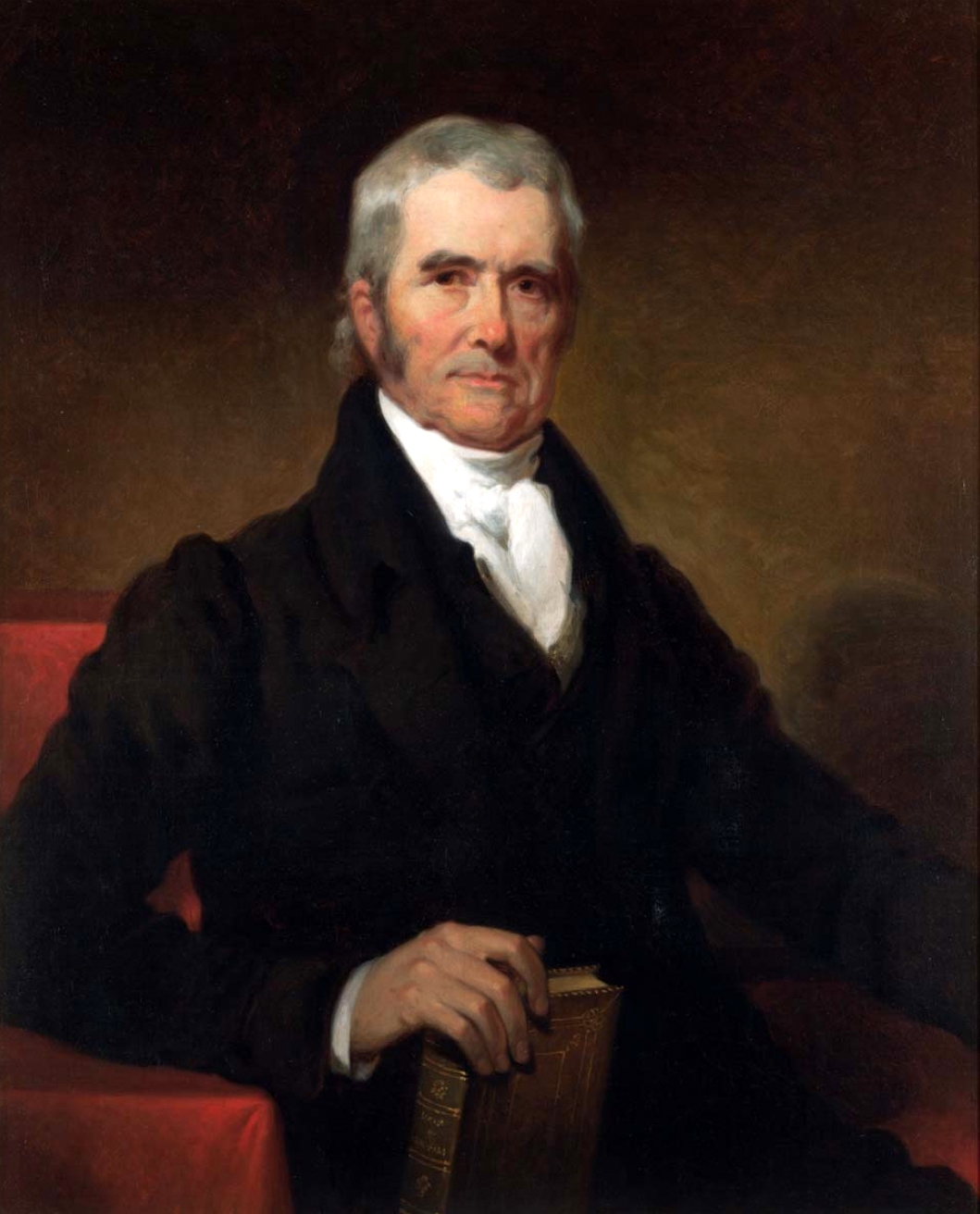
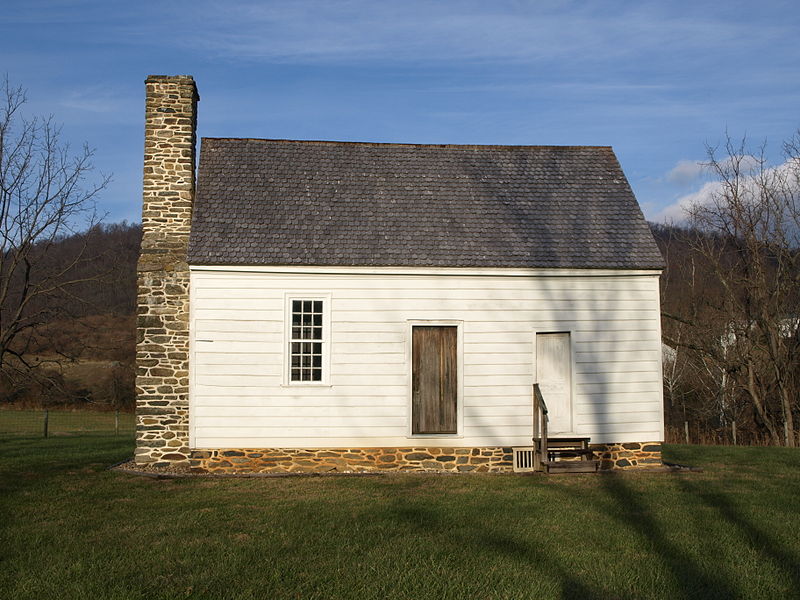

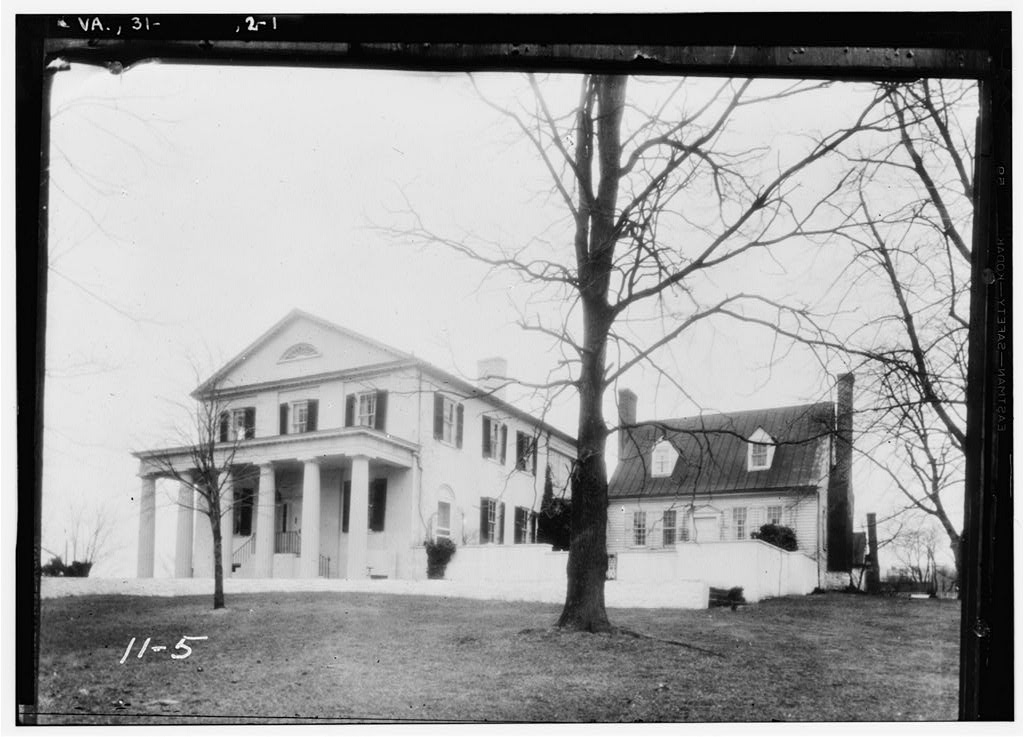
C-SPAN covers the 21st Annual Civil War Conference
During Friday night’s session of our annual Civil War Conference, American History TV covered two of our speakers’ talks. You can find them both here:
Keith Snyder, “Voices of Antietam: A Soldier’s View of America’s Bloodiest Day”
Dennis Frye, “Antietam Shadows: Mystery, Myth, and Machination”
Group forms to save Loudoun County's historic gravel roads from being paved over
Western Loudoun’s historic dirt road known as Trappe Road outside of the Village of Bloomfield. (Photo by Douglas Graham/WLP)
ABC7 News is working on a powerful story about new efforts underway to prevent old gravel roads in Loudoun County from being paved.
America's Routes recently partnered with Mosby Heritage Area Association to educate the public and policy makers about the history that unfolded on these byways over the last couple hundred years.
Members of this group hope that educational process will convince county leaders to preserve the network of gravel roads as much as possible as Loudoun County continues to expand and thrive.
This network of roads, home to historic stone walls, churches, stores and Civil War battles, has gone from 500 miles down to about 250 miles today.
You can catch a preview of our story by clicking here
The Campaign for Willisville
The Mosby Heritage Area Association has partnered with the residents of Willisville to have the village added to the National Register of Historic Places. Freedmen founded Willisville in southwestern Loudoun County, Virginia after the Civil War and it is one of the best-preserved villages of its kind. These African-American communities represent a significant part of Virginia’s history, and Willisville would be among the first in the Commonwealth to receive National Register designation.
The Preliminary Information Form (PIF) was approved for Willisville by the National Register in 2004 which confirmed its eligibility under Criterion A (Significant Events/Patterns) and Criterion C (Architecture). However, the final application for its addition to the Register must include a well-researched and documented survey of the village’s 15 residences, former schoolhouse and country store, and its Methodist Church. We are campaigning to raise $15,000 to fund the professional historical research, facilitate the process, and complete the application.
Please lend your financial support to help preserve the heritage of Willisville and bring the village the historical recognition that it deserves. Please visit http://mosbyheritagearea.org/make-a-donation/ and under Message, type in “Willisville.” If you wish to mail in a check: MHAA, PO Box 1497, Middleburg, VA, 20118, please include “Willisville” in the memo line. Donations are tax-deductible.
The Fight for Historic Aldie
On February 15th the MHAA teamed up with other local preservation organizations to raise awareness of the threat posed by development in the village of Aldie. Approximately 200 preservationists, lawmakers, and citizens came out to learn more about the history of the village and how a proposed new fire station would impact the area. For more coverage of the event see the article in Loudoun Now here.
Participants packed the Aldie United Methodist Church (Photo courtesy of Loudoun Now)
If you missed the program and the story of the village of Aldie, read or view any of the presentations below:
Malcolm Collum, Aldie citizen--The Three Buildings Proposed for Demolition
Kevin Pawlak, Mosby Heritage Area Association--The Battle of Aldie, June 17, 1863
Kristen Pawlak, Civil War Trust--Aldie, Middleburg, and Upperville in the Gettysburg Campaign
John S. Mosby's Postwar Career
Local lawyer John Flannery recently published an editorial in the Purcellville Gazette about John S. Mosby's life after the Civil War. Check out his piece here.
Photo Gallery: August 6th Loudoun Quakers, Abolition, and the Underground Railroad event
Photos are in from this month's special event, Loudoun Quakers, Abolition, and the Underground Railroad event in Lincoln, Virginia. We had an amazing turnout of over 120 guests - I'm pretty sure there wasn't a place to park in the whole village! Inside the 1817 Goose Creek meeting house our guests were treated to several talks: Carolyn Ungar spoke on the history of the congregation and the meeting house, Eric Larson visited from the Loudoun County Courthouse to talk about using court documents to research slavery, and Dr. A. Glenn Crothers of the University of Louisville described the role played by Loudoun Quakers in the Abolitionist movement.
Following the talks guests were able to explore the 1815 Oakdale school and the Quaker burying ground before heading to Springdale for refreshments. Springdale was built in the 1830s for prominent Quaker leader Samuel Janney, and it once housed a school and a Civil War hospital. The home is currently the site of the Springdale Village Inn, a Bed & Breakfast. Guests explored the house as well as the exquisitely landscaped grounds. A huge thanks to the Goose Creek Friends and the Springdale Village Inn for making the event possible! Thanks also to Chuck Pellerin for sharing his wonderful photographs!
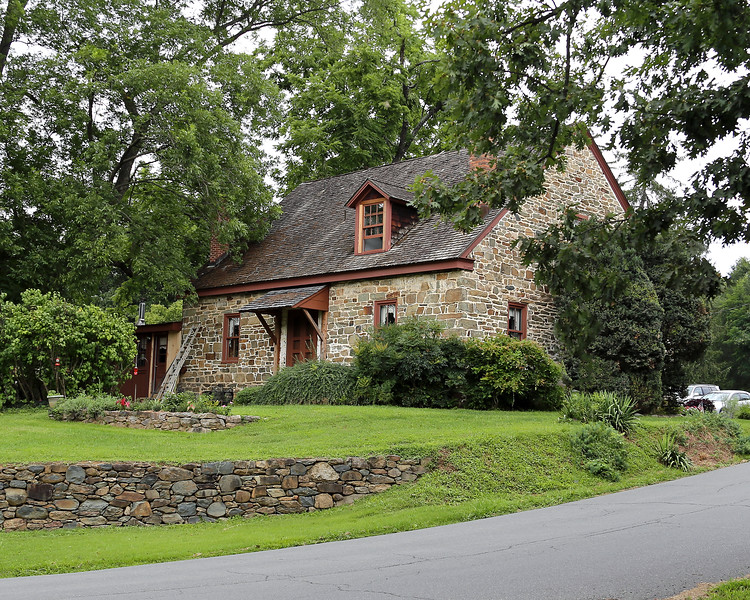
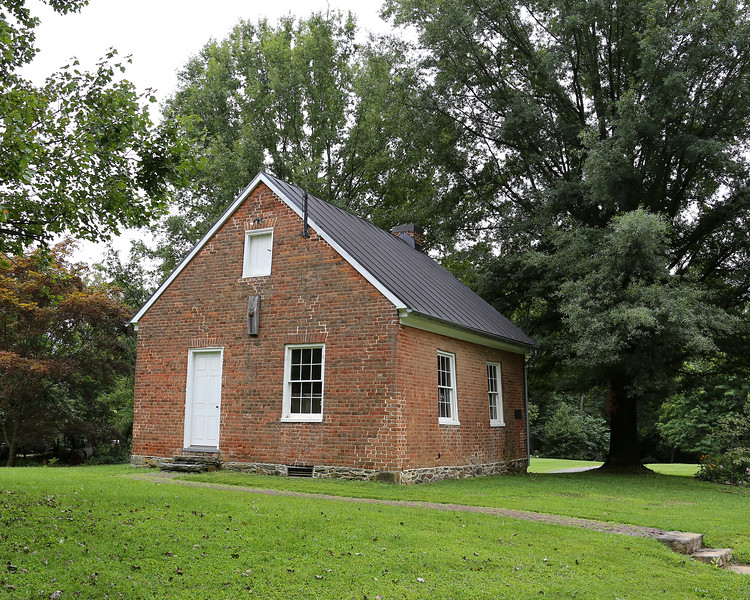
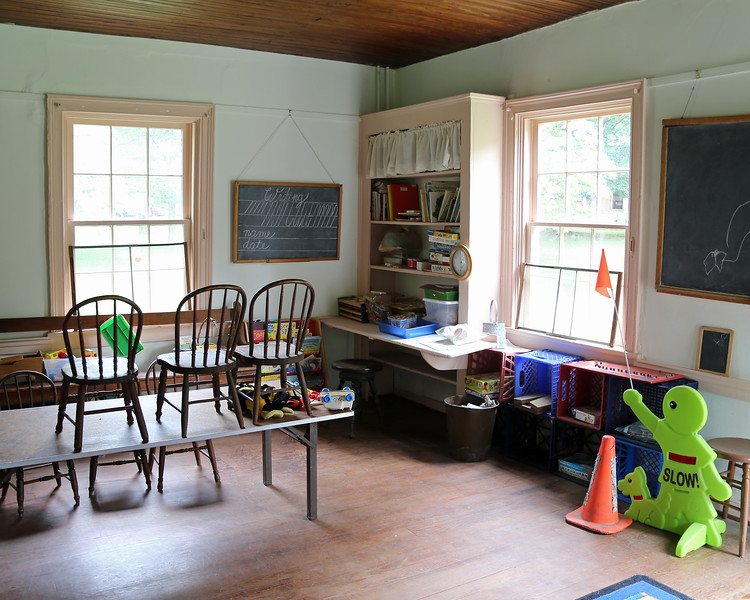
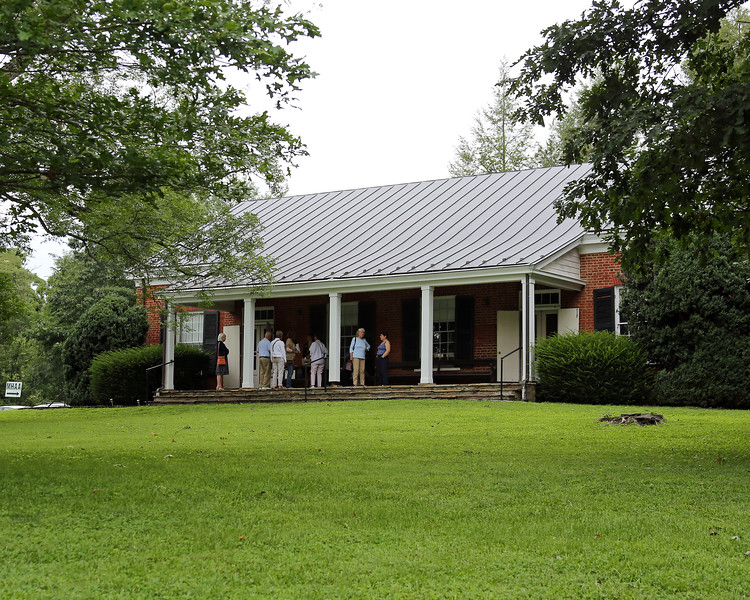
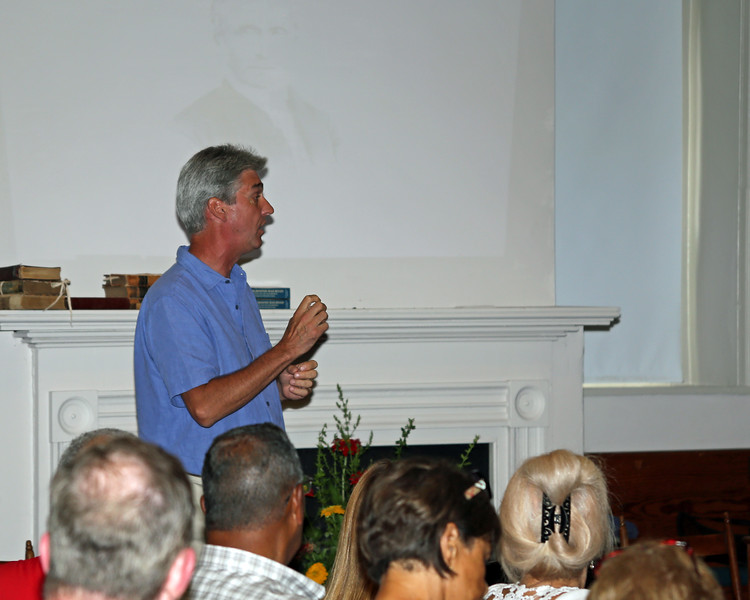
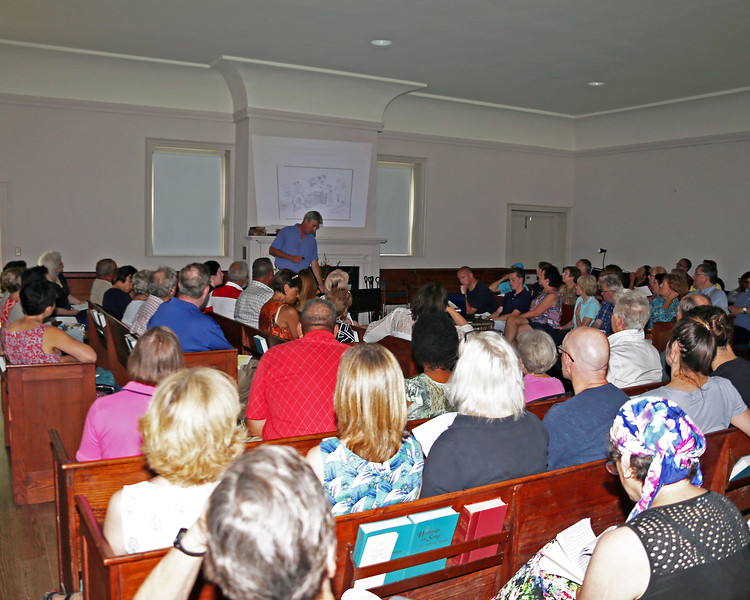
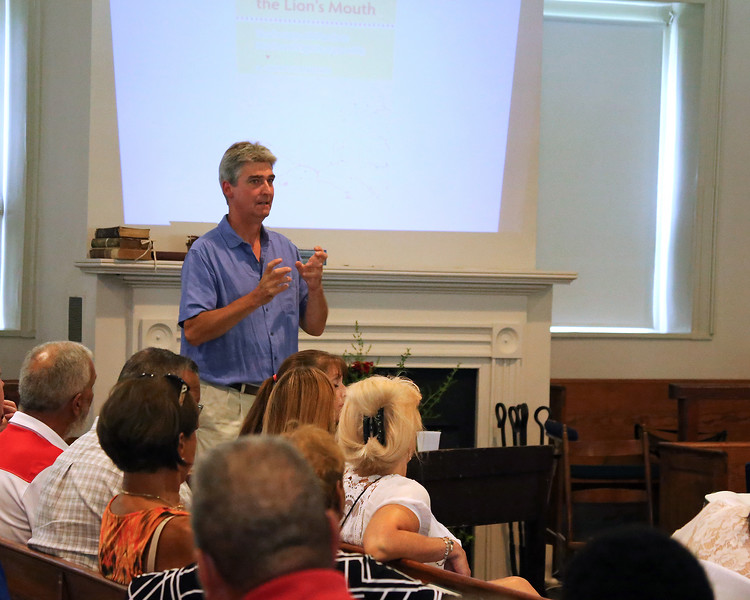

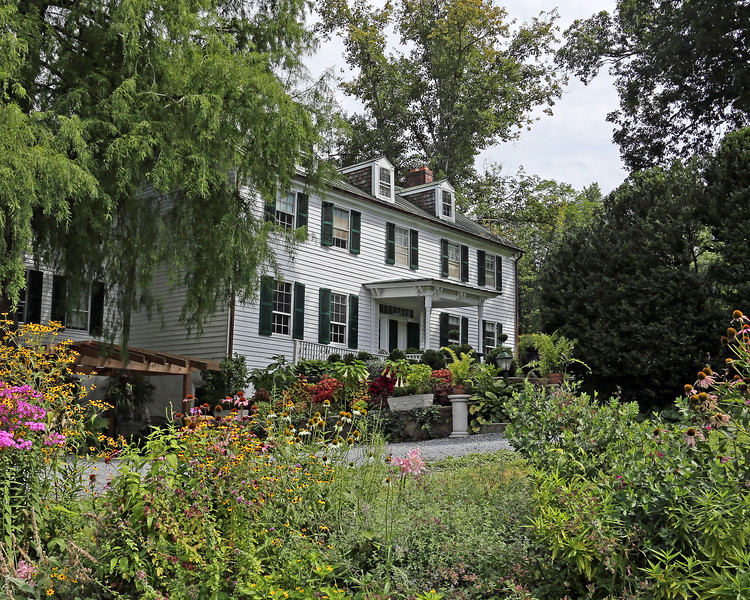
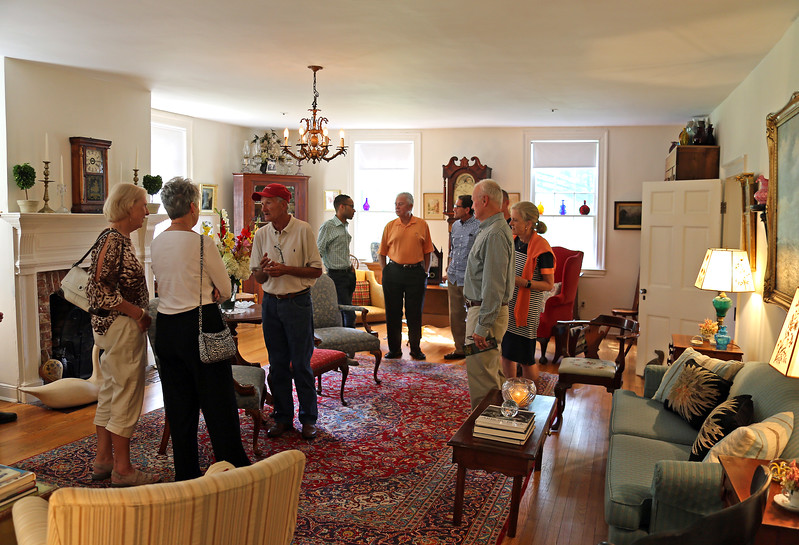


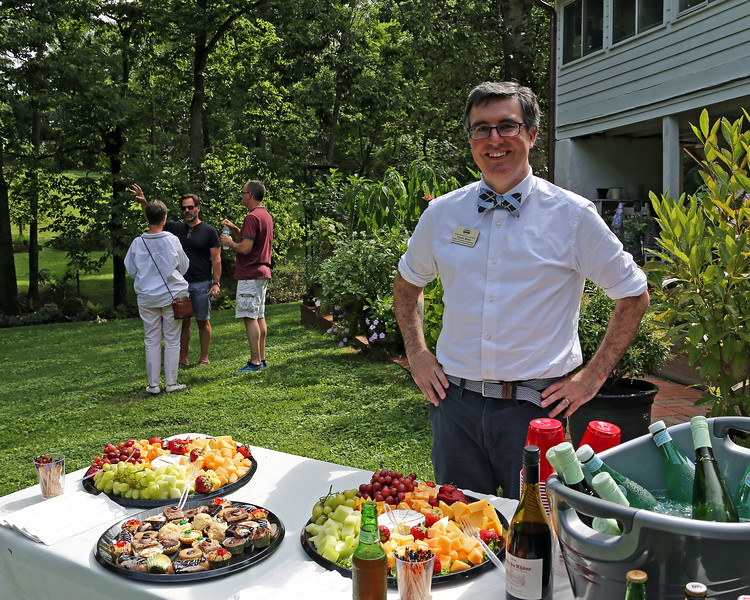
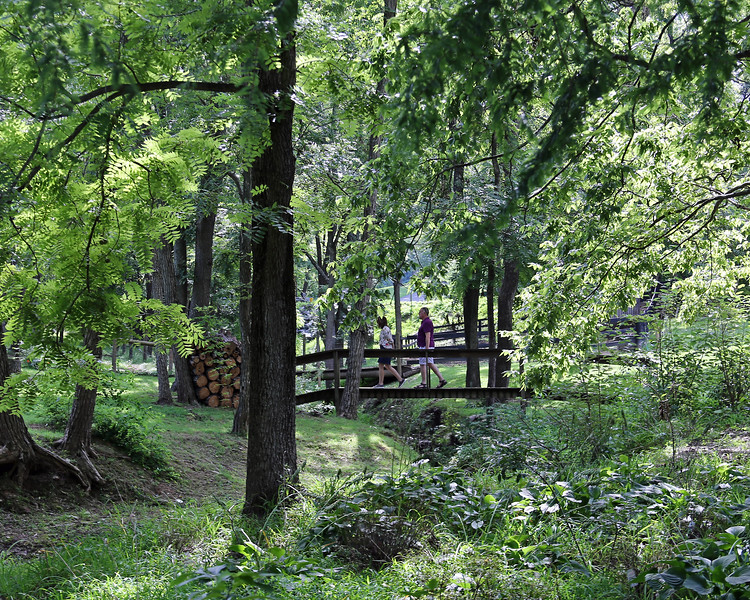
Check out the Heritage Area's recent education programs
Nearly 200 students from Woodgrove High School visited Oatlands, Aldie Mill, and Mt. Zion Church—all sites in the Heritage Area—on May 25-26, 2016, as part of their "One to the World" project. Check out the video showing the fruits of that project below, which includes Mosby Heritage Area Association staff members.
















